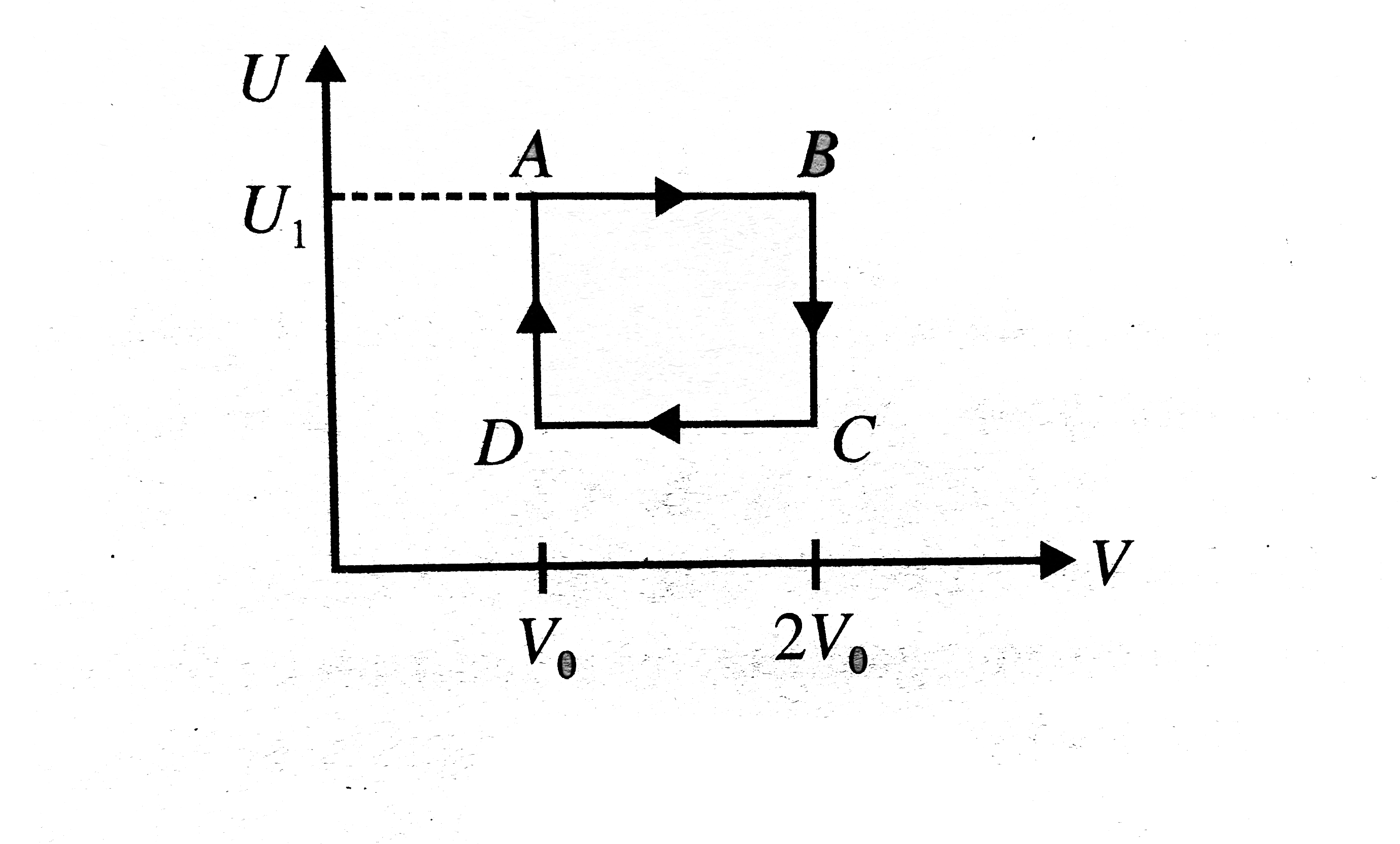Under isothermal condition ,the pressure of a gas is given by P=aV_(-3), where a is a constant and V is the volume of the gas. The bulk modulus at constant temperature is equal to
P
P2
3P
2P
The correct Answer is:C
To find the bulk modulus of the gas under isothermal conditions, we start with the given relationship between pressure and volume:
P=aV−3
where a is a constant and V is the volume of the gas.
1. Understand the Definition of Bulk Modulus:
The bulk modulus B is defined as:
B=−VdPdV
This represents the material's resistance to uniform compression.
2. Differentiate the Pressure with Respect to Volume:
We need to find dPdV. Start by differentiating the given pressure equation:
P=aV−3
Using the power rule for differentiation:
dPdV=a⋅(−3)V−4=−3aV4
3. Substitute dPdV into the Bulk Modulus Formula:
Now, substitute dPdV into the bulk modulus formula:
B=−V(−3aV4)
Simplifying this gives:
B=3aV3
4. Final Expression for Bulk Modulus:
Thus, the bulk modulus at constant temperature is:
B=3P
Since P=aV−3, we can express B in terms of pressure:
B=3⋅aV−3
Conclusion:
The bulk modulus at constant temperature is equal to 3P where P=aV−3.
The bulk modulus B is defined as:
B=−VdPdV
This represents the material's resistance to uniform compression.
We need to find dPdV. Start by differentiating the given pressure equation:
P=aV−3
Using the power rule for differentiation:
dPdV=a⋅(−3)V−4=−3aV4
Now, substitute dPdV into the bulk modulus formula:
B=−V(−3aV4)
Simplifying this gives:
B=3aV3
Thus, the bulk modulus at constant temperature is:
B=3P
Since P=aV−3, we can express B in terms of pressure:
B=3⋅aV−3
The bulk modulus at constant temperature is equal to 3P where P=aV−3.
Topper's Solved these Questions
Similar Questions
Knowledge Check
The bulk modulus of an ideal gas at constant temperature
Ais equal to its volume VBis equal to p/2Cis equal to its pressure pDCannot be determinedThe bulk modulus of an ideal gas at constant temperature
AIs equal to its volume VBIs equal to p/2CIs equal to its pressure pDCan not be determinedThe isothermal bulk modulus of a gas at atmospheric pressure is
A1 mm of HgB13.6 mm of HgC1.013×105N/m2D2.026×105N/m2
Assertion : The pressure of a gas is inversely proportional to its volume at constant temperature and n.
Reason : The gas volume is directly proportional to n at constant temperature and pressure .
View SolutionOne mole of an ideal gas has an interal energy given by U=U0+2PV , where P is the pressure and V the volume of the gas. U0 is a constant. This gas undergoes the quasi− static cyclic process ABCD as shown in the U−V diagram.
 The molar heat capacity of the gas at constant pressure is
The molar heat capacity of the gas at constant pressure is
View SolutionFor a certain process pressure of diatomic gas varies according to the relation P=aV2n, where a is constant. What is the molar heat capacity of the gas for this process?
View SolutionThe pressure of an ideal gas varies with volume as P= aV, where a is a constant. One mole of the gas is allowed to undergo expansion such that its volume becomes ‘m’ times its initial volume. The work done by the gas in the process is
View SolutionThe temperature of a given mass of a gas is increased from 19∘C to 20∘C at constant pressure. The volume V of the gas is
View Solution

